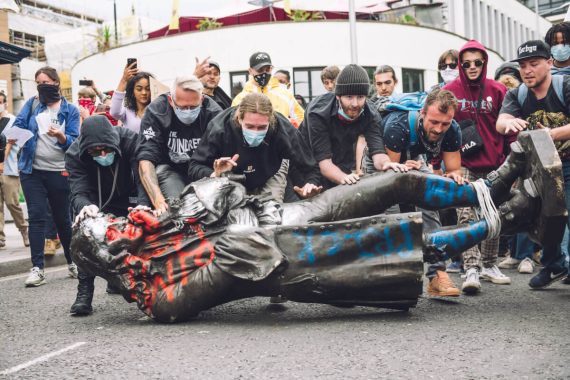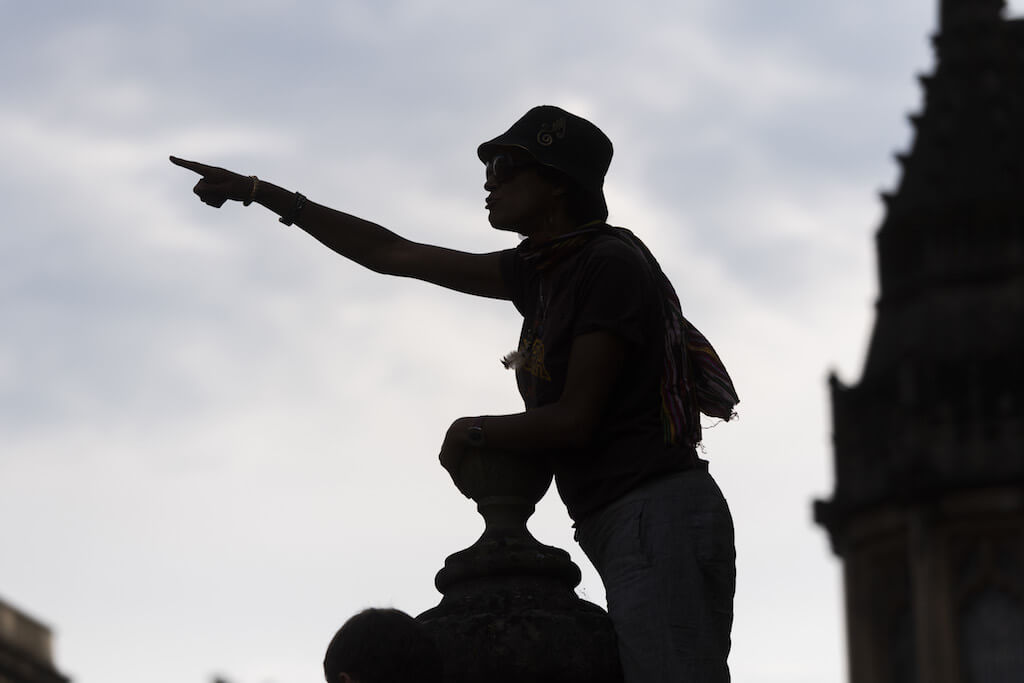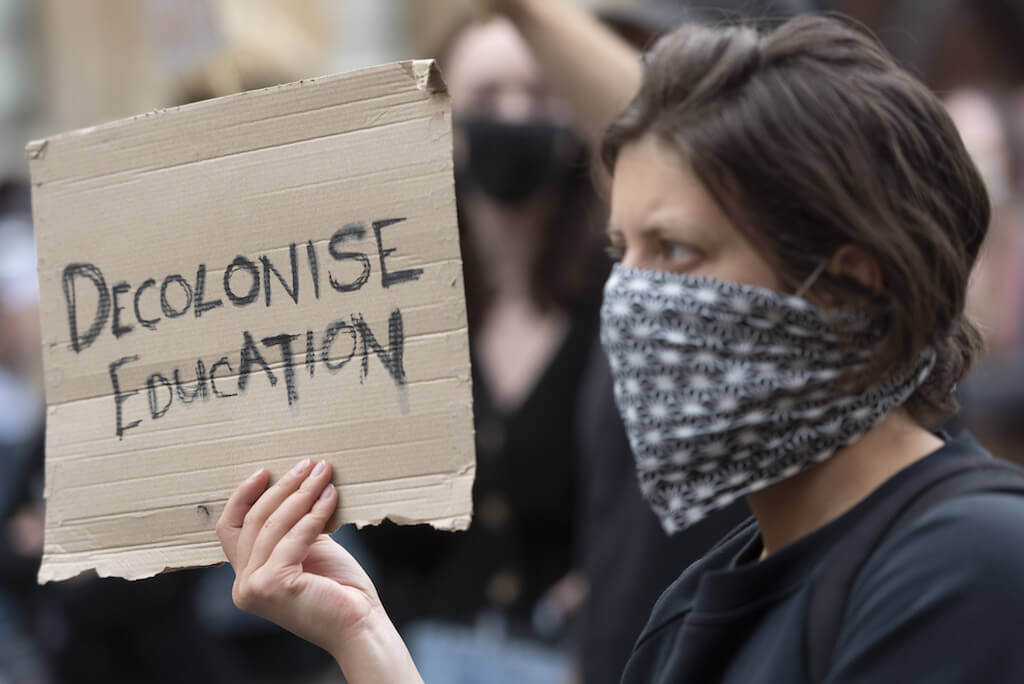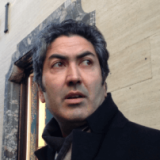An uprising towards racial equality or a dissension into mob-rule? Both descriptions have been used to cover the recent Black Lives Matter protests in American cities and parts of the UK and Europe. The current climate has resulted in a profound but largely cosmetic shift- corporate, celebrity and even political parties (such as Nancy Pelosi and the Democrats) have made it clear that they are on the side of the anti-racism movement by donating money, verbally supporting and putting a knee down in solidarity with African-Americans (and the double-sided symbolism of a flag of freedom/oppression).
Prominent sports personalities (such as NFL players) who previously shied away from anything remotely controversial have found themselves apologizing for past silence and vowing to do more (after the black-listing of fellow quarterback Colin Kaepernick for his distinctive protest against American police brutality by kneeling through the national anthem during the entire 2016 season).
Now everyone has a racist anecdote to tell from school, the workplace or beyond – whether it’s the white person saying they should have done something more or the black person recounting an otherwise forgotten incident. However, much deeper issues remain; the historical placement of statues that symbolize oppression, the intertwined history of colonialism and the slave trade and its virtual absence in school curriculums, as well as ongoing African-American racial inequality and the dissension into a polarized world-view that is solely about race.
The Killing of George Floyd
The trigger for this profound and seemingly instantaneous plea for forgiveness from the entire African American community was the torturous killing of George Floyd on May 25 (through an eight-minute knee-hold) by a white police officer in Minneapolis after he was called to deal with a suspected counterfeit $20 bill. This became the latest provocation of police brutality against African American males and has become a symbol of the countless (unrecorded) deaths against black people that occur regularly in American cities.
Floyd’s imperfect character has only deepened his “martyrdom”; a father of 5, arrested eight times between 1997 and 2005 for drug possession, theft and trespass (spending several months in jail) and who in 2009 was sentenced to 5 years in prison for aggravated robbery with a deadly weapon. As a symbol of the Black Lives Matter movement, Floyd’s seemingly tragic life story points less to flawed personal decisions and more to the institutionalized racism that is codified into administrative, educational and economic life for African Americans and culminates in either white police brutality against the community and/or time in prison. His face has become the face of the movement with images, murals, and iconography spreading throughout the world. A statue may be next.
Statueclasm
The toppling of statues that represent slavery advocates (such as the recent dramatic falling of Edward Colston in Bristol, UK) or those associated with General(s) or soldiers of the Confederate State in the American Civil War (mostly in the Southern USA) has become another manifestation of public anger and the disconnect between the icons of a place, the complex history and the sentiment of significant portions of the populace.
In the case of Edward Colston, it is difficult to defend the statue (although various senior members of the UK government have adamantly done so); he was a slave trader from the 17th century who as deputy governor of the Royal African Company oversaw close to 100,000 Africans into bondage. The monument was up for 125 years because of his financial contributions to the city (a concert hall is also named after him) and there had been a movement for the last two decades to (peacefully) remove the statue, which was unsuccessful. Like many statues scattered around Britain, it held little artistic merit and was crafted in a kind of late 19th-century naturalism (which was out of step with the Paris school of Modernist sculpture at the time).
However, the ‘unruly mob’ taking down a near universally-loathed figure created an almost immediate backlash – football supporters in Plymouth immediately rushed to ‘defend’ a statue of Sir Francis Drake (a 16th-century sea captain who navigated the world and was also linked to the slave trade) and far-right groups descended upon Trafalgar Square in London to ‘defend’ statues there with riots ensuing.
In 2001, the Taliban government in Afghanistan destroyed the ancient 6th century Buddhas of Bamyan. There are differing and disputed reasons for the destruction of the Buddhist statues. One version states the destruction was a protest against international aid money that was earmarked for the conservation of the statues while the country experienced extreme poverty; a, more widely circulated theory is that it was simply pre-meditated religious iconoclasm. Both could most certainly be true since they are not necessarily incompatible reasons. International outrage followed their destruction because it was an ancient monument (and part of world heritage). It was a symbol of a minority religion in (present-day) Afghanistan and the Taliban were universally loathed for their barbaric approach to law, order, and governance.
The contrast of these two iconoclastic destructions seems clear-cut at the moment but opens up all kinds of questions: what if the figure is not as clearly vilified as Colston? What if the statue holds significant artistic/heritage value such as the Buddhas of Bamyan? Does the destruction simply feed into those who wish to preserve the icon of a saint or a dubious tyrannical historical figure as a kind of stone martyr?
Perhaps a precedent of sorts was set with Memento Park in Budapest, Hungary, which preserved dozens of statues from the late 1940s to the 1980s of key Hungarian communist figures (as well as Lenin, Marx, and Engels) after they were removed in 1989-90 (with the fall of the regime).
Some of these statues play with aspects of Modernist sculpture while others are crafted in a banal pseudo-naturalism. Housed together on the outskirts of the city, however, they have been transformed in exile; they have lost their haunting dominance of representing the state and its total control of the citizenry and have been reborn as a kind of massive installation of contemporary art that acts as a critical commentary on Hungary’s fractured 20th-century history.
Empire and Slavery
The massive British Empire (where the sun never set) of the 17th to early 20th centuries is conspicuously missing from the UK school curriculum and is instead either studied and critiqued at the university level or left to circulate among the population through media or popular culture as a kind of mystical past that lacks details and facts and often revolves around nationalism. Primary schools introduce harmless topics such as ancient Mayans and the Vikings alongside the Battle of Hastings (British history) and the World Wars – the latter being revisited in more depth in secondary school.
The active role of slave-trading as part of the economic success of cities such as Bristol or Liverpool is treated more as a footnote than a central part of British history and the countless political, social and cultural figures such as (previously mentioned) Sir Francis Drake, Edward Colston or Cecil Rhodes (the benefactor of Rhodes scholarships and a famous 19th century imperialist with white supremacist views whose statue is currently being removed by Oxford University) or institutions such as the insurance body Lloyds of London (who have recently announced a vague initiative towards slave-related reparations) have up until now been seamlessly edited through centuries of history.
In contrast, the American curriculum is much more enlightened in terms of an anti-colonial stance starting from the revolution of 1776 through the civil war (1861-65) and the battle to end slavery. The European notion that the U.S. is self-absorbed in its ideas and history to the ‘ignorance’ of world culture is paradoxically both correct and deeply misguided. For instance, an absence of a non-colonial Islamic history blights the schooling of not just British and American systems but virtually every country in the world (including Muslim-majority nations except for Iran) for various reasons ranging from a cultural-political opposition with historical roots (such as in some Balkan nations) to periods of colonial rule that created collective amnesia (in places such as Egypt) to extreme secularization agendas of past governments (such as in Turkey).
At the same time and strangely, virtually no country outside the U.S. (with the possible exception of small Caribbean nations) introspectively studies the roots of trans-Atlantic slavery and the racial segregation and subsequent devastating effects on culture and society at the secondary school level.
Recommended
In fact, the American experience is often used to shoulder and deflect some of the ingrained attitudes to race and ethnicity that are deeply rooted in Europe and other nations. Canada, for instance, has perfected the approach of moral high-ground (it is constantly contrasting itself with its southern neighbor both on the political level and in the popular consciousness) while simultaneously repressing its Colonial roots of active participation in both slavery and genocidal policies to indigenous peoples. This contrasts with the American student’s introduction (although this can vary by state) to these topics, which start with a recognition of internal inherent unholy behavior at the primary school level.
Not Everything is Black and White
BLM stands for Black Lives Matter; in the U.S. people are for the most part either ‘White’ or ‘Black’ – this partially comes out of the segregationist history of the country as well as efforts to highlight massive disparities (such as the civil rights movement of the 1960s). It also raises other less discussed questions – people from the Middle-East, Turkey, and Latin America are usually categorized as ‘people of color’ even if ethno-genetically they may be part of Caucasian groupings (which is also fluid and less defined than is often presented). In the U.S., ‘Asian’ in conversation and on official forms refers to people of Far-East Asian descent (China, Japan, Korea) and is often used by people from those groups as a self-identifier (such as on TV, comedy and radio programs) even though Asia is a massive continent that includes 4.5 billion people and a plethora of ethnicities.
Canada uses the term ‘racialized’ to describe essentially any ‘non-white’ person and Prime Minister Justin Trudeau recently used the term in pointing out Canada’s own less than perfect history of racism (while critiquing American racism through his extended silence). In the last decade, it has become ubiquitous on forms and as the politically-correct method of self-identification.
In the U.K., the term that comes up is BAME (Black, Asian, Minority Ethnic), which highlights the British disposition for using acronyms even when no one knows what they stand for. In this case, ‘Asian’ refers more to people from the Indian Sub-Continent (since this is a historical/demographic emphasis) but also is ‘inclusive’ enough to cover everyone who is non-white (Caucasian minorities such as Eastern European, Irish or Roma people have other identifiers). BAME or BME (Black, Minority Ethnic) are widely used in the media as well as in official forms and groups.
The problem with many of the terms (however seemingly well-intentioned) is the reduction of complex national, socio-ethnic and religious identification to an official word or acronym that is meaningless outside the politics of the country – in effect creating another stigmatizing label for those that choose to discriminate and simultaneously forcing a form of mental ghettoization on large swathes of the population without any tangible advance in historical knowledge or socio-political unity for the countries.
The devastating polarization and urban conflict that rocked the U.S. and some British and European cities in the past few weeks have compelled organizations and people with power and influence to make sure they are seen in the correct light; everyone wants to be on the side of the oppressed, everyone wants to be on the side of the righteous. The Black Lives Matter movement is a significant and messy political moment that may contribute to positive and long-reaching effects in disparate areas (such as education) while paradoxically also playing into more entrenched ideas of race and communalism. The danger is to mistake tokenistic gestures of racial and ethnic equality by ad agencies and the symbolic overthrow of bronze statues of easily targeted, long-dead historical figures with a long-term commitment to a radically different world-view that includes incorporating the significant and acrimonious colonial legacy and slave trade into the educational systems and consciousness of citizens.







